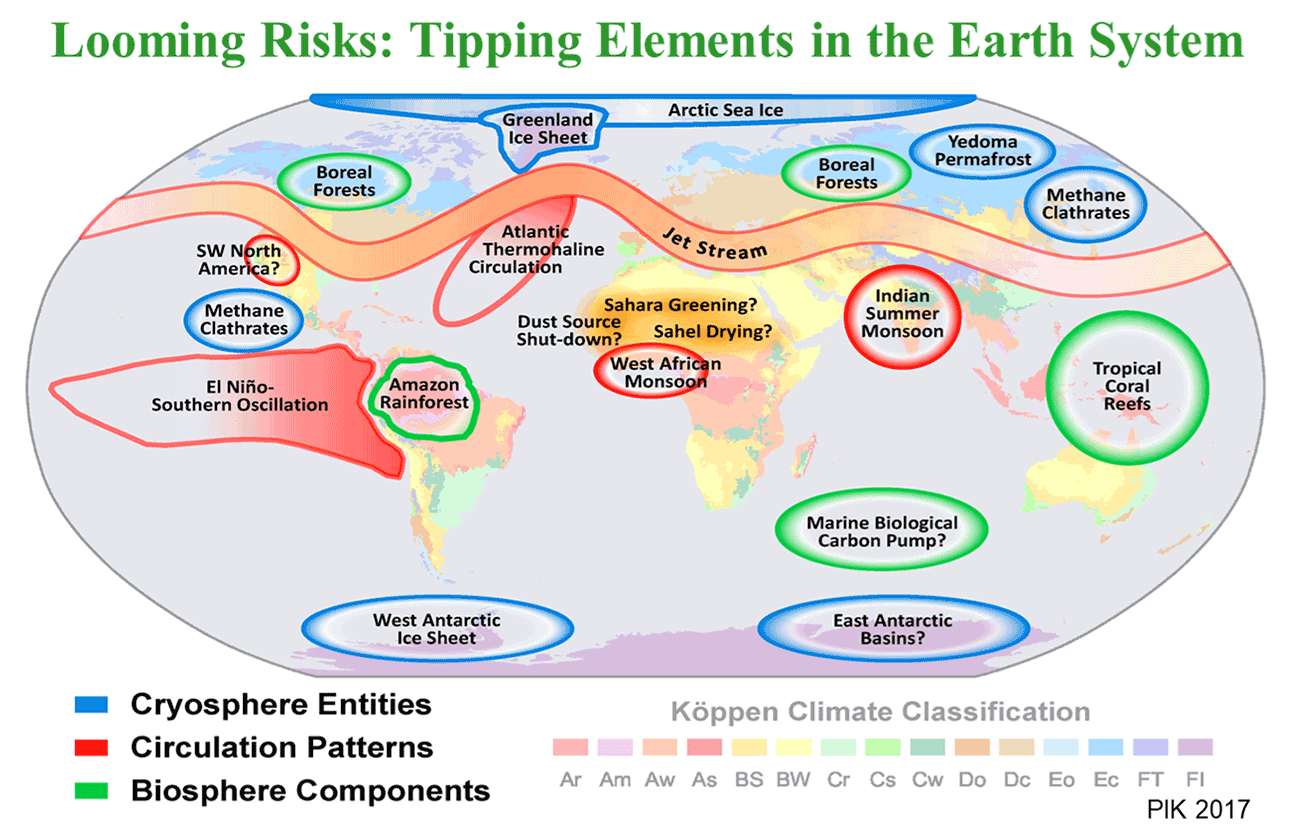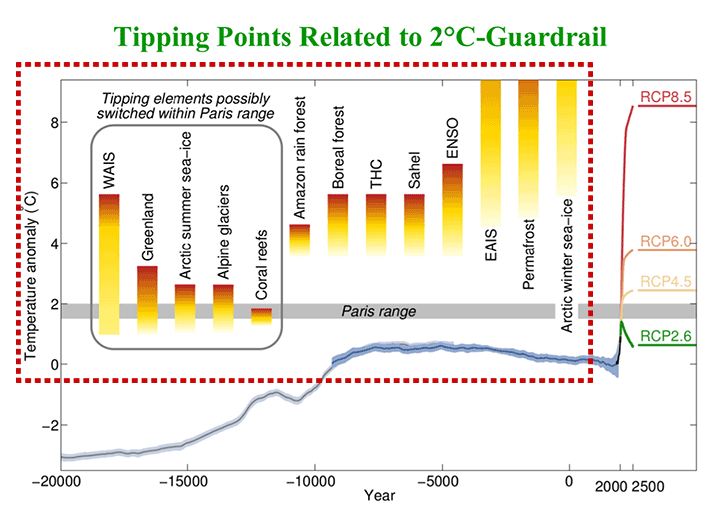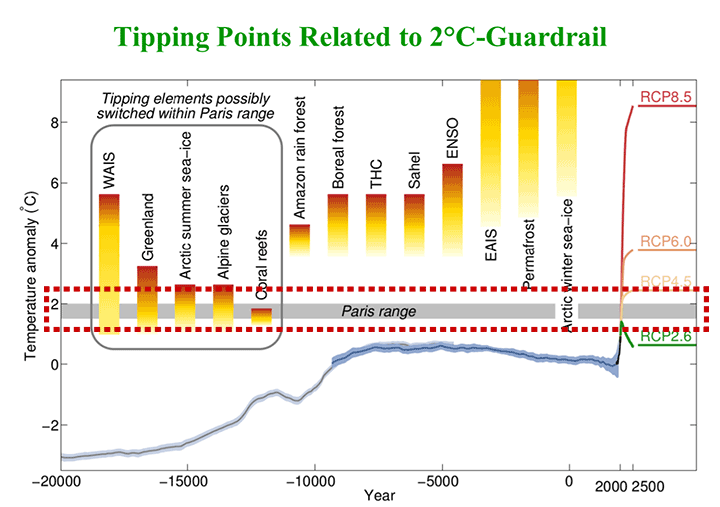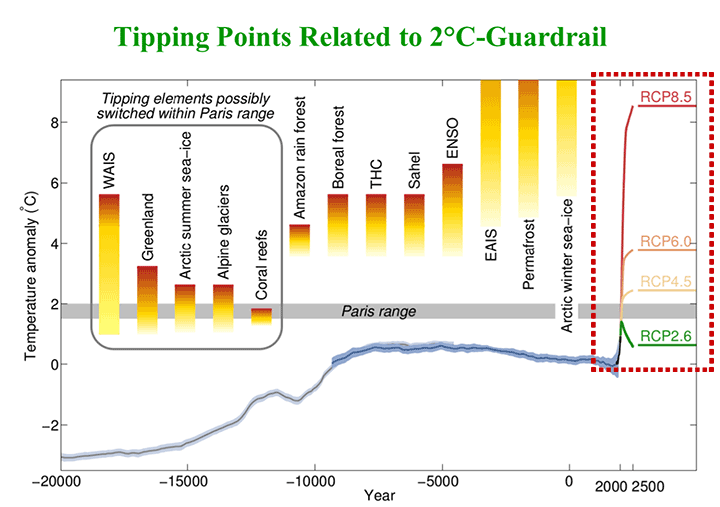What limiting the temperature increase to 2 degrees C means
It is, however, difficult to determine how much of an increase in temperature is permissible. The chart shown below shows the possibility of triggering a tipping element through temperature change.
The permissible temperature is dependent upon conditions. For example, we think a 1- to 4- degree C increase in air temperature may cause the ice sheets in Greenland to melt. Fortunately, ice sheets will not melt completely until the temperature increases by 4 degrees C; but, unfortunately, they will start melting if the temperature increases by only 1 degree C.
The gray area shown as the "Paris range" in the middle of the chart is between 1.5 and 2 degrees C. By this chart, if we restrain global warming by 1.5 to 2 degrees C, the eight tipping elements on the right, including the impact on the Amazon rainforest, could be prevented.
Meanwhile, even if we can limit global warming to between 1.5 and 2 degrees C, the five tipping elements on the left, including the melting of ice sheets in the West Antarctic may not be prevented. Even if we can achieve the 2-degree C target, it is predicted that most of the coral reef ecosystems will disappear.
However, the more we limit the increase in temperature, the higher the possibility of preventing these threats becomes.
The right side of the chart shows the results of simulation of the future temperature increase in four different scenarios. If people continue depending on fossil fuels and discharging carbon dioxide at the current level, we will be subject to the RCP8.5 (red) scenario, in which the temperature increases more than 8 degrees C and all tipping elements will be triggered.
If we try our best to reduce the carbon dioxide emissions, we will experience the RCP2.6 (green) scenario. If we can achieve this, the temperature will not increase by 1.5 degrees C, but decrease at a certain point. If so, we will be able to realize our 2-degree C target.














